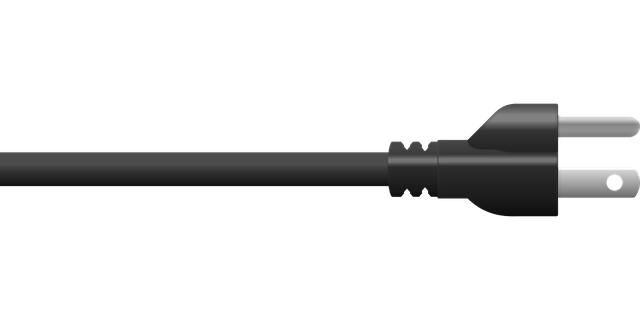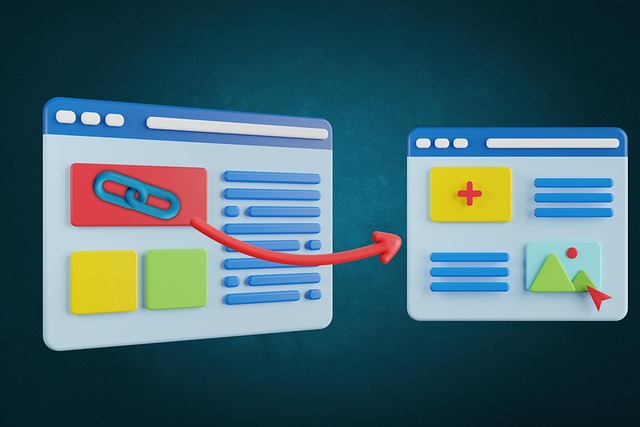Internal linking, powered by a smart internal links plugin, is a strategic SEO approach that enhances user experience by seamlessly connecting website pages. This method improves site performance through faster load times and reduced bounce rates, while establishing content hierarchy helps search engines understand context and relevance. By analyzing existing content and using relevant anchor text, websites create natural, engaging links. Effective implementation boosts online visibility and drives organic traffic. A smart internal links tutorial guides users in crafting contextual links for better navigation and SEO optimization. Regularly reviewing and updating links ensures a user-friendly experience and maintains site relevance. Successful strategies, like a travel blog's interlinked articles, enhance engagement and signal search engines about content relevance. Using analytics provided by the smart internal links plugin allows for refining the strategy based on performance metrics, ultimately improving SEO rankings and user satisfaction.
Looking to elevate your website’s SEO with powerful internal linking? Discover the ultimate guide to unlocking its potential. We explore why strategic internal linking matters for search engine optimization, highlighting the benefits of using a top-tier Smart Internal Links Plugin. Learn about key features to seek, master implementation steps, and gain insights from successful real-world strategies. Measure your performance through tracking techniques, ensuring continuous optimization.
- Understanding Internal Linking: Why It Matters for SEO
- Unlocking the Power of Smart Internal Links Plugin
- Key Features to Look For in an Ideal Internal Linking Tool
- Step-by-Step Guide: Implementing Effective Internal Links
- Real-World Examples of Successful Internal Link Strategies
- Measuring Success: Tracking and Optimizing Your Internal Link Performance
Understanding Internal Linking: Why It Matters for SEO

Internal linking is a fundamental aspect of search engine optimization (SEO) that often gets overlooked. It involves creating strategic connections between pages on your website to improve user experience and guide search engines’ crawlers. By utilizing smart internal links, you can significantly enhance your site’s SEO performance. These ‘smart’ links are not just hyperlinks; they are a strategic tool to navigate users through relevant content, ensuring each page has its purpose and place within the website’s structure.
A well-executed smart internal links strategy can improve page load times, reduce bounce rates, and increase time spent on site. It allows you to establish a clear hierarchy of information, making it easier for search engines to understand your content’s context and relevance. A simple yet effective smart internal links tutorial might include analyzing existing content, identifying related pages, and using relevant anchor text to create natural-feeling links. This process ensures that your website provides value to users and search engines alike, ultimately boosting its online visibility and driving organic traffic.
Unlocking the Power of Smart Internal Links Plugin

The smart internal links plugin is a game-changer for website owners looking to optimize their site’s navigation and search engine visibility. This powerful tool goes beyond simple link placement by offering a strategic approach to internal linking, enabling users to create a seamless digital experience for their visitors. By employing smart internal links tips and strategies, you can guide your audience through relevant content, improving user engagement and boosting SEO performance.
A smart internal links tutorial reveals the art of crafting contextual links that enhance the overall website structure. It allows you to connect related pages intelligently, ensuring a logical flow of information. This strategy not only helps search engines understand your site’s hierarchy but also enables visitors to discover valuable content effortlessly. Leverage these smart internal links tools to transform your website into a well-oiled machine, where every click is an opportunity to captivate and inform.
Key Features to Look For in an Ideal Internal Linking Tool

When selecting a smart internal links plugin for your website, look for key features that will enhance your content’s accessibility and boost your SEO strategy. Firstly, ensure the tool offers an intuitive interface, allowing easy creation and management of internal links without requiring extensive technical knowledge. A user-friendly design promotes efficiency in implementing your smart internal links strategy.
Secondly, advanced optimization capabilities are essential. The plugin should enable you to target specific anchor texts, control link placement, and analyze existing internal link structures for improvement. These features contribute to smart internal links optimization, ensuring your website’s architecture supports both user experience and search engine visibility. Through these means, you can enhance the overall SEO of your site.
Step-by-Step Guide: Implementing Effective Internal Links

Implementing effective internal links is a strategic process that can significantly enhance your website’s user experience and SEO performance. Here’s a step-by-step guide using the best tool for the job—the Smart Internal Links plugin. First, identify the key pages you want to optimize, focusing on high-traffic areas and essential content. Next, use the plugin to automatically generate links within your content, ensuring a seamless reading experience without disrupting the flow.
For optimal smart internal links optimization, customize anchor text to make links relevant and engaging. The Smart Internal Links tutorial suggests using descriptive language that reflects the target page’s content. Additionally, take advantage of contextual linking by strategically placing links in areas where users are most likely to browse next. Regularly review and update your internal links to maintain their relevance, as this smart internal links tip can help keep your website’s navigation fresh and user-friendly.
Real-World Examples of Successful Internal Link Strategies

Successful internal linking strategies can be a game-changer for any website looking to enhance user experience and boost SEO. Let’s explore some real-world examples that demonstrate effective use of smart internal links plugins.
For instance, consider a blog focused on travel adventures. Their smart internal links strategy could involve linking relevant articles within each post, like “Top 10 Hiking Trails in the Alps” to “Best Alpine Resorts.” This not only guides readers towards related content but also keeps them engaged for longer. Additionally, using smart internal links tips like anchor text optimization and strategic placement can significantly impact SEO. For example, instead of generic links like “click here,” using descriptive anchors such as “Discover Hidden Gems in Paris” not only improves user experience but also signals search engines about the relevance of linked pages. Through smart internal links optimization, this travel blog successfully creates a labyrinthine network of interconnected content, driving traffic and improving overall site performance.
Measuring Success: Tracking and Optimizing Your Internal Link Performance

Measuring success is a crucial step in optimizing your internal linking strategy. By using tools like a smart internal links plugin, you can track the performance of your internal links and gain valuable insights into user behavior. These plugins provide detailed analytics on click-through rates (CTRs), time spent on pages, and bounce rates for each linked page. This data helps identify high-performing links that drive engagement and low-performing ones that may need improvement.
Smart internal links optimization goes beyond tracking; it involves continually refining your strategy based on these insights. A smart internal links tutorial can guide you in creating more effective anchor text, optimizing link placement, and ensuring a seamless user experience. By keeping an eye on these metrics and making data-driven adjustments, you enhance the overall smart internal links SEO, improving both user satisfaction and search engine rankings.
